Crew 314 GreenHab Report 11-04-2025
GreenHab Officer: Bérengère Bastogne
Environmental control (fan & heater):
Heater on (setup temperature = 72 °F)
Fan on (to keep the temperature below 94 °F)
Average temperatures (last 24h): 87.3 °F
Maximum temperature (last 24h): 100.9 °F
Minimum temperature (last 24h): 73.8 °F
Hours of supplemental light: 7-10 pm
Daily water usage for crops: 10.5 gallons
Daily water usage for research and/or other purposes: 0.5 gallon
Water in Blue Tank (200 gallon capacity): 153.6 gallons
Time(s) of watering for crops: 20 min
Changes to crops: Germination of sprouts of China Rose radish, Kale, Arugula and cress seeds in 3 small rectangular black pots
Narrative: I watered all the plants with water.
The door of the GreenHab was left open for 4 hours 25 minutes (1.50 pm to 6.15 pm) to reduce the temperature inside (maximum of 100.9 °F).
I sowed the seeds of sprouts of China Rose radish, Kale, Arugula and cress seeds in 3 small rectangular black pots.
I took 3 garden labels for the new cultures.
Harvest: (include which crop and mass in grams) 1 g of basilic
Support/supplies needed: None
Astronomy Report – April 11th
[category
astronomy-report]
Crew 314 Astronomy Report 11Apr2025
Name: Louis Baltus
Crew: 314
Date: 11Apr2025
MDRS ROBOTIC OBSERVATORY
Objects to be Imaged this Evening: /
Images submitted with this report: /
Problems Encountered: /
MUSK OBSERVATORY
Solar Features Observed: Full solar disk observed and imaged today as first observation. During the next day, I’ll try to zoom in on the details I will see.
Images submitted with this report (2) :The one of the chromosphere and the one with the prominences (one of them is jpg)
Problems Encountered:
-At first, I couldn’t see anything so I sent an email to Peter Detterline. Thanks to his advice I succeeded and observed the sun for the first time. What a wonderful feeling !
-Couldn’t superpose the two images properly, the one with the prominences keep coming as first layer. As it’s the first time for me using all that software, I’ll keep trying and learning and see if I manage to get the expected result.
Sol Summary – April 10th
Crew 314 Sol Summary Report 10-04-2025
Sol: 4
Summary Title: Mars the Beautiful
Author’s name: Arnaud de Wergifosse (Crew executive officer)
Mission Status: ongoing
Sol Activity Summary: This morning, Béatrice (commandant), Antoine (engineer), and Arnaud (executive officer) headed out on an EVA. After a quick check of Antoine’s equipment, the crew took Galileo Road toward Candor Chasma, a stunning canyon with striking Martian-like scenery. Dressed in their space suits, they may have felt (just for a few moments) like true explorers on Mars. The EVA went smoothly and offered breathtaking views throughout.
Back at the MDRS, the afternoon was more relaxed, focused on scientific work. Arnaud and Béatrice continued data collection for their joint experiment, which tracks heart rate, heart rate variability, sleep quality and duration, as well as responses to a supplementation protocol (either a placebo or a combination of Lactobacillus helveticus and glycine). Each participant also carries out a daily five-minute cardiac coherence session, a breathing technique known to support stress management.
Meanwhile, our journalist, Batoul continued her research by placing bacterial cultures outside to observe how extreme temperature variations affect their growth, an experiment that may offer insights into the effects of climate change. Bérengère, the greenhab officer, spent the whole day sterilizing spores for her experiment.
To wrap up the day, some crew members took time to unwind or get active. Arnaud finished his afternoon with a high-intensity bike session, a powerful way to cap off a day of exploration, research, and physical challenge.
Look Ahead Plan: One EVA is scheduled in the morning to conduct Bérengère’s experiment. Throughout the day, we will continue working on our individual experiments, including a CRM simulation in the afternoon involving the whole team for Odile’s experiment. Béatrice and Arnaud will carry on their research while collecting data with their wearables.
Anomalies in work : None was mentioned today.
Weather: Sunny, without clouds. Warm in the afternoon. Temperatures varying between 40°and 84° throughout the day
Crew Physical Status : Everyone was in good health today, with no issues reported.
EVA: This morning’s EVA crew changed slightly as Batoul Tani (Crew Journalist) had to remain at the Hab due to a scientific emergency related to her experiment.
The team departed on time, with Arnaud as EVA leader. He drove Curiosity with Antoine (Crew Engineer) as passenger, while Béatrice (Crew Commander) drove Opportunity, since Spirit is still out of use due to a battery charging issue. Their first stop was at the intersection of Galileo Road and Cow Dung Road, after taking Moonwalk Road out of the MDRS. Antoine’s equipment was checked and found to be in good condition.
They continued toward Compass Rock, their intended exploration site. A moment of concern arose due to a miscommunication with Mission Support, who briefly thought the team might be stuck. The situation was quickly clarified, allowing the EVA to proceed.
A brief stop along Galileo Road followed, though no one exited the rover. Communication with CapCom was attempted but hampered by a poor signal. At that point, leadership was transferred to Béatrice. The team’s actual position slightly differed from the initial plan, but they reached Compass Rock by 10:15. After reviewing the map and planned route through the canyon (Candor Chasma), they left the rovers at 10:25.
Due to the lack of signal in Candor Chasma, there was no contact with the team while they were walking. Communication was restored at 10:53 as they exited the canyon.
On the return trip, Antoine drove Curiosity solo, and Arnaud drove Opportunity with Béatrice as passenger. The crew returned safely to the Hab and enjoyed spotting a few lizards along the way.
Reports to be filed: Sol Summary, Journalist Report, Greenhab Report, Operations Report, Crew Photos, EVA Report, EVA Request
Support Requested: none
Operations Report – April 10th
Crew 314 Operations Report 10Apr2025
SOL: 4
Name of person filing report: Antoine (Crew Engineer)
Non-nominal systems :
The toilet repair performed yesterday is still holding and functioning properly.
The CO detector in the science dome is not working.
Notes on non-nominal systems : /
ROVERS
Spirit rover used: /
Hours: /
Beginning charge: /
Ending charge: /
Currently charging: /
Opportunity rover used:
Hours: 214.8 (0.4 used)
Beginning charge: 100%
Ending charge: 65%
Currently charging: No
Curiosity rover used:
Hours: 306.9 (0,4 used)
Beginning charge: 100%
Ending charge: 73%
Currently charging: No
Perseverance rover used:
Hours: /
Beginning charge: /
Ending charge: /
Currently charging: /
General notes on rovers: Spirit is still out of use due to a battery issue.
Summary of Hab operations : Today in the Habitat, we focused on cooking, socializing, completing our individual reports, and working on our respective experiments. Additionally, we did a bit of physical exercise to stay in shape. Finally, we held our usual team meeting to discuss progress and upcoming tasks.
Water Use (please use both methods to estimate water usage)
Time of measurements (collect data for the same time window): 7 p.m.
1) Per formula (see notes): 15.55 gallons
2) Smart Home Dashboard (see notes): 15.08 gallons
Water (static tank, remaining gallons): 374.99 gallons (per formula) & 392.88 gallons (Smart Home Dashboard)
Static tank pipe heater (on or off): on
Static tank heater (on or off) : on
Toilet tank emptied (no or yes): no
Summary of internet: used for music playing, mails, research for experiments, learning languages.
Summary of suits and radios (EVA #6) :
Suits : 2, 4 and 5.
Radio : 3, 4 and 5.
Summary of GreenHab operations: put notes here: I watered all the plants with water.
The door of the GreenHab was left open for 3 hours 35 minutes (2.10 pm to 5.45 pm) to reduce the temperature inside (maximum of 98.8 °F)
WATER USE: 9 gallons
Heater (On or Off): Heater on (setup temperature = 72°F)
Supplemental light (hours of operation): 7-10 pm
Harvest (name, weight in grams): 4 g of parsley and 6 g of basilic
Summary of ScienceDome operations: put notes here
Inoculation of Esherichia coli on 96 well plate + UV-C exposure
Inoculation of Bacillus thuringiensis on petri dishes + soil+ UV-C exposure
Isolation of arbuscular fungi spores (after exposure to stresses)
Disinfection of arbuscular fungi spores
Spores on a membrane to test the germination after exposure to stresses
Plantain seedlings (use for experiment) watering
Dual split (Heat or AC, On or Off): Off
Summary of RAM operations: (Tools used, work done)
At 9:20 a.m., the Crew Engineer took 2 zip ties and a dark ribbon to repair equipment in the field if needed. However, no repair was necessary, and all materials were returned to their place.
Around noon, the HSO Officer went to the RAM to take 2 inches of blue tape to label a container and indicate its intended contents.
Around 4:00 p.m., the Crew Engineer took 6 small zip ties, 3 large ones, 50 inches of wire, and 20 inches of grey vinyl duct tape to reattach tarps and seal holes.
Summary of any observatory issues: None for the moment.
Summary of health and safety issues: Everyone was in good health today, with no issues reported. There were no safety concerns to note.
Questions, concerns and requests to Mission Support: None for the moment.
EVA Report – April 10th
Crew 314 EVA Report 10-04-2025
EVA #6
Author : Odile Hilgers
Purpose of EVA: The primary objective of tomorrow’s EVA is to conduct essential equipment checks at the intersection of Galileo Road and Cow Dung Road. Subsequently, we will discover some new area, known as Candor Chasma. We will park our rovers at Compass Rock, and walk from this point. The goal of the walk is to enter the canyon and advance approximately one mile beyond the rover parking point to conduct further observation and terrain assessment.
Start time: 9:32 am
End time : 11:12 am
Narrative :
Minor change in this morning’s EVA crew: Batoul Tani had a scientific emergency related to her own experiment and couldn’t participate in the EVA.
The crew left the Hab on time this morning. The team was split in two, with Arnaud acting as EVA leader for the day. He took Curiosity, while Béatrice and Antoine took Opportunity (Spirit is still out of use due to a battery charging issue, which explains the change from yesterday’s EVA plan). Béatrice was driving.
They made a first stop at the intersection of Galileo Road and Cow Dung Road, after taking Moonwalk Road out of the MDRS. They checked Antoine’s equipment—no issues to report.
They continued to Compass Rock, where they planned to leave their rovers for the day. At one point, there was a brief concern due to a miscommunication: Mission Support thought the EVA team might be stuck somewhere. Fortunately, the situation was quickly clarified, and the mission could proceed.
The team made a brief stop along Galileo Road without leaving the rover. CapCom and the EVA leader attempted to communicate, but the signal was very poor. A change in leadership was made, with Béatrice becoming the new EVA leader.
Their actual position differed from the one initially planned, so they proceeded a bit further and finally reached Compass Rock at 10:15. There, they discussed the map and the route they would follow through the canyon, and left the rover at 10:25.
Due to very poor signal in Candor Chasma, we had no contact with the EVA team while they were walking.
They reestablished communication with CapCom at 10:53, informing us they were exiting the canyon.
On the way back, Antoine drove Curiosity solo, while Arnaud drove Opportunity with Béatrice as passenger. They returned safely to the Hab and even had the chance to admire some lizards along the way.
Destination: Candor Chasma (and with the rovers Compass Rock)
Coordinates (use UTM WGS 84):
Intersection Galileo Road and Cow Dung Road : 4252250N, 519000W.
Candor Chasma, parking the rovers at Compass Rock : 4252000N, 520000W.
Participants: Béatrice Hollander (commander), Antoine Dubois (Engineer), Arnaud de Wergifosse (Executive Officer).
Road(s) and routes per MDRS Map: MoonWalk Road, Cow Dung Road 01110, then turning on Galileo Road 11004.
Mode of travel : Driving and walking
Crew Photos – April 10th
Sol Summary – April 13th
Crew 314 Sol Summary Report 04-13-2025
Sol : 7
Summary Title : Whispers of a forgotten ocean.
Author’s name: Arnaud de Wergifosse (Crew Executive Officer)
Mission Status: ongoing
Sol Activity Summary: Sol after sol, the crew continues to push the boundaries of analog Martian exploration with resilience, focus, and scientific curiosity. The morning began with final EVA preparations and a weather check under clear skies and mild winds.
At 09:37, four crew members exited the airlock after standard decompression procedures to carry out a field mission in the Sea of Shells region. Among them was GreenHab Officer Bérengère Bastogne, who aimed to collect two soil samples from this geologically rich area for her fungi-based research. The site, thought to have once been covered by an ancient Martian ocean, offered both symbolic and scientific value. She was joined by Crew Engineer Antoine, tasked with inspecting his deployed equipment after it had been exposed to intense wind conditions the day prior.The EVA team was split between two rovers: Curiosity (Arnaud and Bérengère) and Opportunity (Antoine and Béatrice). Shortly after departure, Mission Support issued a reminder to reduce rover speed in order to conserve battery for the full route.
After checking in at several intersections, the team reached the vicinity of their target area around 10:20. While on site, they conducted geological sampling, explored the surrounding terrain, and deployed the drone to capture aerial imagery. Due to the local topography, radio contact with the Hab was lost after 09:57, though GPS tracking remained active throughout the EVA. The team began their return journey at 11:20 and successfully re-established communication at 11:40 upon reaching the Cow Dung Road and Galileo Road intersection. There, they performed a brief inspection of Antoine’s equipment and shared a status update with CapCom.
The EVA concluded with the crew safely returning to the MDRS at 11:55. Antoine and Béatrice alternated as drivers for Opportunity, while Arnaud continued as driver of Curiosity. All mission objectives were accomplished, marking another efficient and productive sol of surface operations.
Later in the day, the crew took time to unwind with a group workout session, helping to relieve both the physical fatigue and mental tension accumulated throughout the sol. This was followed by a communal cooking session, where the team shared a warm meal—an enjoyable and grounding end to a demanding but fulfilling day.
Look Ahead Plan : Tomorrow, we will carry out Louis’s experiment, which requires the entire crew to participate in an EVA, meaning there will be two EVAs : one in the morning and another in the afternoon. His experiment, which began on Sol 4 inside the MDRS and will continue in the field on Sol 8, focuses on the interaction between humans and technology. For this purpose, he needs the crew to perform a series of movements, which will be recorded by a wrist-mounted portable device.
Anomalies in work: None was notified.
Weather: The day began with clear, sunny conditions in the morning, followed by increasing cloud cover in the afternoon. Temperatures ranged from 38°F to 79°F over the course of the day.
Crew Physical Status: Everyone was in good health today, with no issues reported.
EVA: Four crew members took part in today’s EVA, including GreenHab Officer Bérengère Bastogne, who collected two soil samples from the Sea of Shells as part of her fungi-related experiment. This site, once covered by an ancient ocean, offered a poetic backdrop to the mission. She was joined by Crew Engineer Antoine, who needed to inspect his installation following strong winds the previous day. The team left the MDRS at 09:37 after standard decompression, splitting into two rovers: Béatrice and Antoine in Opportunity, and Bérengère with EVA leader Arnaud in Curiosity. Mission Support reminded the team early on to reduce speed to preserve rover battery life.
The crew almost reached their destination at 10:20 after checking in at key intersections. While on site, they explored the area, collected samples, and used the drone to capture aerial images. Radio contact was lost after 09:57 due to poor signal but GPS tracking remained active. At 11:20, the team began their return and re-established contact at 11:40, upon arriving at the Cow Dung Road and Galileo Road intersection. There, they checked Antoine’s equipment and briefly reported their activities. The EVA concluded with the team safely heading back, with Antoine and Béatrice alternating driving duties in Opportunity, and Arnaud remaining at the wheel of Curiosity.
Crew was back at the station at 11:55.
Reports to be filed: Sol Summary, Journalist Report, GreenHab Report, Operations Report, EVA Report, EVA Request, Crew Photos, Astronomy Report.
Support Requested: Food requested by the crew was provided by the mission support
Supplemental Operations Report – April 2025
Date: 4/12/2025
Name of person filing report: Sergii Iakymov
Reason for Report: Routine
Non-Nominal Systems: Crew car. Power system battery, inverters, generator. Robotic observatory. HAB outer shell. Spirit.
Power system:
Solar: The battery bank does not hold charge when sun is down and low on the horizon. Inverter Slave 1 and 2 went offline and do not restart, which limits us to 5kW when on solar.
Main generator has been monitored for oil leaks; minor leaks observed, Moreover, generator is consuming oil because of worn piston rings. Adding oil every day is necessary. Generator is limited to 8kW, see previous reports for details. Engine governor is being stuck in open position during startups and needs to be replaced, new part ordered.
Main generator:
1) Oil, oil filter and air filter changed on 04/11/2025. Hours: 9260.2
2) Current hours – 9274.4.2
Propane Readings:
Station Tank: 74%
Director Tank: 69%
Intern Tank: 88%
Generator Tank: 64%
Water:
Hab Static Tank – 344 gallons
GreenHab – 144 gallons
Outpost tank – 400 gallons
Rovers:
Sojourner rover used: Yes
Hours: 212.7
Beginning Charge: 100 %
Ending Charge: 100 %
Currently Charging: No
Notes on Rovers: Spirit is not charging. Perseverance’s parking brake needs to be adjusted.
Cars:
Hab Car used and why, where: To Hanksville for supplies.
Crew Car used and why, where: By crew from Grand Junction.
General notes and comments: Crew car driver’s side front ball joint is bad. Low oil pressure is most likely caused by a bad sensor (it does not change due to RPM or temperature like it should).
Summary of Internet: Nominal
EVA suits and radios:
Suits: Nominal.
Comms: Nominal.
T-Echo EVA-link: Nominal
Campus wide inspection, if action taken, what and why: Nominal
Summary of Hab Operations: Small cracks in the wall of the Hab in the loft area are allowing cold air intrusion. Static tank and pipe heaters unplugged. Thermostat setup for 60F due to warm weather.
Summary of GreenHab Operations: Nominal
Summary of SciDome Operations: Dual split is being turned on during day time for cooling.
Summary of Observatories Operations: Robotic observatory offline.
Summary of RAM Operations: Nominal
Summary of Outpost Operations: Static tank heater unplugged and removed. Screen doors installed in both trailers. Intern trailer heater turned off due to warm weather.
Summary of Health and Safety Issues: Nominal
Mid-mission Research Report – April 12th
[category science-report]
Mid mission report – Crew 314
Crew 314 – First Days on Mars: Adapting, Exploring, and Connecting
Crew 314 officially landed on the surface of Mars on April 6, 2025, at noon Earth time. Upon arrival, we quickly familiarize ourselves with the station and, after a restorative night’s sleep, began working on our respective experiments and preparing for the first EVAs.
The first two sols were particularly intense, filled with a fast-paced sequence of reports, extravehicular activities, experiment setup, station tasks, and the necessary adjustments to the Martian simulation lifestyle. A bit of confusion surrounding reporting procedures during these initial days added to the challenge, but the crew quickly adapted and found its rhythm.
Over the following three sols, although the schedule remained full, we were able to manage our tasks more efficiently. This allowed us to take moments to truly appreciate the experience of living and working on “Mars”: admiring the stunning landscape, sharing moments of team bonding through cooking, card games, and informal discussions.
These early days have laid the groundwork for a cohesive, resilient, and motivated crew, ready to make the most of the mission ahead.
Experiments:
This section provides an overview of the current status and recent developments in the various research projects being conducted by the crew. Each experiment continues to evolve in alignment with its objectives.
Odile Hilgers (Health and Safety Officer):
As Health and Safety Officer for this analog Martian mission, I am leading a series of six medical simulations designed to assess crisis management and team coordination in an isolated and confined environment. These scenarios are inspired by realistic medical emergencies and are adapted to the operational constraints of life in a Martian habitat. The program is structured to gradually increase in complexity and immersion: the first two simulations serve as training exercises, the next two are designed as Earth-based medical scenarios, and the final two will simulate emergencies occurring on Mars. Each simulation unfolds in three phases: a briefing, during which participants receive clinical background on the patient, including medical history and the story of the present illness; the simulation itself, involving three role-players and three observers; and finally, a 30 to 45-minute debriefing session centered around Crisis Resource Management (CRM) principles. During the debrief, all participants complete the Ottawa Global Rating Scale (Ottawa GRS), providing a structured evaluation of team performance. So far, three scenarios have been conducted, all taking place inside the Hab, both on the upper and lower decks. Data analysis will be conducted once all six simulations are completed, in order to evaluate behavioral patterns, decision-making processes, and overall team efficiency in high-stress situations.
Bérengère Bastogne (GreenHab Officer):
The experiments conducted at the Mars Desert Research Station are part of my doctoral thesis. The main objective is to evaluate the impact of Martian environmental stresses – UV radiation (A, B and C), temperature (hot-cold cycles), gravity and substrate (regolith) – on arbuscular mycorrhizal fungi (AMF). These fungi are obligate symbionts that associate with plant roots and can supply them up to 80% of total phosphorus and nitrogen. As one of the most important mutualistic microorganisms for global food production, AMF are essential elements to be considered for the development of future colonies on Mars.
Understanding how AMF respond to environmental conditions is critical. Since they are closely associated with plants, any parameter affecting spores could impact essential AMF functions and indirectly impact plant growth and plant health. However, despite their crucial role, little is known about how these environmental stresses affect these microorganisms. Therefore, expanding our knowledge in this area is crucial.
My research is divided into two experiments. The first aims to study the effects of these stresses on spore germination. The second focuses on the ability of spores, after exposure to stresses, to associate with plant roots.
The initial step involved estimating the number of spores in 10 g soil (to prepare for the first and second experiments). I then exposed the soil – containing spores – in Petri dishes or Falcon tubes to different conditions for 48h. For the germination study, approximately 10 g of soil (containing 30-40 spores) was used per condition. For the root association study, I used 10 g per condition, with six replicates.
To test the substrate stress, I isolated spores from 6x10g of soil and transferred them into regolith. The environmental conditions were applied as follows:
Temperature: Petri dishes were placed outside (near the entrance of the ScienceDome)
Gravity: Falcon tubes were attached to the Random Positioning Machine (RPM) – placed in the ScienceDome at room temperature
UV: Petri dishes were placed under a UV lamp in the ScienceDome at room temperature
Substrate: Spores were placed in Petri dishes filled with regolith, kept in the ScienceDome at room temperature
Control: Petri dishes were placed in the ScienceDome at room temperature without any added stress
After 48h, for the germination study, I isolated spores from the soil samples exposed to the different conditions. Then, to prevent contamination in subsequent steps, I disinfected the spores using various solutions. Once disinfected, I placed four spores on each membrane, which was then folded in half twice. The membranes were then buried in a moistened soil mix within Petri dishes and incubated in the ScienceDome at room temperature.
For the second experiment, I mixed the stressed soils (post-48h exposure) with a soil mix in small pots. After moistening, I transplanted ten plantain seedlings (germinated in the greenhouse approximately one week earlier) into each pot. All pots were labeled and placed in the ScienceDome at room temperature.
On Wednesday 16 April, I will assess spore germination and viability by transferring each membrane to a a separate Petri dish and adding a drop of methyl thiazolyl diphenyl-tetrazolium bromide (MTT) to each spore. Since MTT is photosensitive, I will cover the Petri dishes with aluminium foil and keep them in the ScienceDome at room temperature. After 24h, I will observe the germination and viability of each spore.
On Thursday 17 April, I will evaluate the association between AMF spores and plant roots. All plantain seedlings will be harvested and stained using a series of treatments (bleach, vinegar and ink) at 70°C (oven). After staining, I will observe each seeding roots under a microscope to determine whether there is any point of contact between the AMF and the roots.
During the EVAs, I collected soil samples to identify the AMF species present in the Utah desert soil, depending on their characteristics. If time permits, I will expose the spores found in these samples to the various stress conditions for 48h, then assess their viability with MTT.
Batoul Tani (Crew Journalist):
As part of the microbiological experiments conducted during the MDRS mission, I have been investigating the resistance of two bacterial species, Escherichia coli and Bacillus thuringiensis, to various environmental stressors that simulate Martian surface conditions. These include UV-C radiation, temperature fluctuations, and the potential protective effect of native soil samples.
During the initial phase of the mission, I dedicated my time to the preparation of culture media, including LB broth and agar plates in Petri dishes, to ensure consistent and sterile growth conditions throughout the experiments.
For Escherichia coli, I carried out two main exposure experiments. The first consisted of an 8-hour exposure to UV-C light to evaluate the bacterium’s tolerance to high doses of ultraviolet radiation. The second experiment involved placing the bacterial cultures outdoors for 48 hours, exposing them to natural day-night cycles and ambient temperature fluctuations. These conditions aimed to simulate the thermal variations that would be encountered on the Martian surface. Over the next few days, I intend to monitor the potential development of biofilm structures under these stress conditions, as biofilm formation can serve as a protective survival mechanism in harsh environments.
For Bacillus thuringiensis, I implemented a similar 8-hour UV-C exposure protocol, with an additional variable: the presence or absence of soil collected from the Cowboy Corner site. This was done to explore the potential shielding effect of local soil against radiation. The samples were also subjected to either stable or cyclic temperature conditions to assess how thermal fluctuations interact with UV stress and soil protection. In the upcoming days, I will perform a comparative analysis of colony-forming units (CFUs) to quantify survival rates across the different experimental conditions.
These experiments aim to contribute to our understanding of microbial resilience in analog Martian environments, which has implications for both planetary protection and the feasibility of microbial-based life support systems.
Louis Baltus (Crew Astronomer):
The first experiment I am conducting during the MDRS simulation is centered on developing a solar weather monitoring system using the Musk Observatory. The objective is to design a tool that could one day be deployed on Mars to monitor solar activity and protect astronauts from potentially harmful radiation.
However, the experiment faced delays during the initial phase of the mission. Due to a lack of sufficient prior training and self-education on the telescope’s operation, I was unable to use the observatory effectively for the first several days. This resulted in a significant setback to the planned data collection schedule.
Yesterday, I was finally able to perform my first imaging session with the telescope. This marked a critical step forward, but it also became apparent that the data acquisition process is far more time-consuming than anticipated. Given the remaining time in the mission and the complexity of the equipment, I have decided to focus exclusively on capturing high-quality solar images for the rest of the rotation. The full exploitation and analysis of this data will be carried out after the mission concludes.
Unfortunately, today’s weather conditions were unfavorable, with high winds and heavy cloud cover making telescope operations nearly impossible. Despite this, I remain optimistic. With continued practice and clearer skies in the coming days, I expect my proficiency to improve significantly, allowing for better and more frequent image acquisition.
The second experiment, conducted under the supervision of a professor from UCLouvain, investigates astronaut-computer interaction (ACI) via gesture-based controls—an area that has seen very limited study to date. The goal is to evaluate the practicality and cognitive workload associated with using wearable gesture recognition systems in analog Martian conditions.
Two commercial devices, the TapStrap and TapXR, are being evaluated. Both allow users to input commands via a predefined set of 16 finger gestures. These gestures are intended to serve as an alternative to conventional interaction methods, especially in scenarios where gloves, mobility constraints, or interface limitations would hinder performance.
A baseline data collection session was completed before the mission under standard Earth conditions. During the simulation, I am conducting two test sessions with a participant to measure gesture memorization, recognition accuracy, and production time:
The first session took place on Sol 4, with the participant wearing normal indoor clothing. The session was completed without incident, and all necessary data was recorded.
The second session is scheduled for Sol 8, during which the participant will wear a full astronaut suit. This test will simulate extravehicular activity conditions and allow us to assess how the suit’s physical constraints—such as limited dexterity and sensory feedback—affect gesture-based interaction.
As the experimenter, I am responsible for guiding the participant through the testing protocol and recording all performance metrics. The comparison between the pre-mission, Sol 4, and Sol 8 sessions will provide valuable insights into the feasibility of gesture-based controls for future space missions.
The findings from this study are expected to inform the development of more ergonomic and intuitive human-computer interfaces tailored for constrained environments such as the surface of Mars.
Antoine Dubois (Crew Engineer):
As part of my experiment, I aim to measure sediment transport in an arid environment analogous to that of Mars. The primary objective of this study is to assess wind-driven erosion dynamics and to draw lessons applicable to the protection of structures built on Mars, where extreme climatic conditions and a thin atmosphere suggest a slow but continuous process of erosion.
In the field, I have installed dust collectors at three different heights — 10 cm, 20 cm, and 30 cm — in order to observe variations in particle size distribution depending on their transport height. This approach will help identify whether certain grain sizes are more likely to be transported at specific altitudes, which could have practical implications for the design and durability of Martian infrastructure.
To complement these measurements, I have also deployed a data logger to record local environmental conditions, along with a sensor under each dust collector that measures soil moisture, temperature, and electrical conductivity. These parameters will help me better understand how soil conditions influence sediment movement.
The collected samples will later be analyzed using three different sieves (2 mm, 500 µm, and 250 µm), allowing me to classify the particles by size and create detailed granulometric profiles for each height. These analyses will provide valuable insights into aeolian transport mechanisms in desert environments and their applicability to Martian conditions.
At the midpoint of the mission, all instruments are functioning properly, and the first samples will be collected within a day or two. Initial wind speed and direction data have also been retrieved from the computer available in the HAB. By the end of the mission, this experiment is expected to yield useful and relevant results for research on the adaptation of human infrastructure to the Martian environment.
Béatrice Hollander and Arnaud de Wergifosse (Crew Commander and Crew Executive Officer):
The primary objective of this joint study is to evaluate the effects of a dietary supplementation combining a probiotic (Lactobacillus helveticus) and an amino acid (glycine), compared to a placebo, on stress levels as well as sleep quality and duration. Physiological data have been collected nightly, including heart rate, heart rate variability, total sleep time, and sleep quality, using scientifically validated wearable devices (Oura rings®). Given the highly similar living conditions among crew members during the nighttime period, this timeframe is particularly suitable for such data collection.
To account for potential confounding variables, additional physiological measures such as skin body temperature and oxygen saturation are also monitored. In parallel with these objective physiological indicators, participants completed three self-report questionnaires providing a subjective, behavioral perspective. These instruments assess perceived stress levels (Perceived Stress Scale-10), daytime sleepiness (Epworth Sleepiness Scale), and satisfaction with sleep over the preceding week (PROMIS sleep disturbance).
Furthermore, all crew members engage in a daily session of cardiac coherence—a controlled breathing technique consisting of 5-minute cycles of respiration, characterized by inhaling for 5 seconds and exhaling for 5 seconds. This practice is included to assess its potential effects on stress regulation and sleep, as well as any interaction it may have with the proposed supplementation.
Preliminary trends suggest possible intra-individual variations. Some crew members appear to experience improved sleep duration during the mission compared to their baseline data collected prior to the simulation. However, no significant intergroup differences have been observed at this stage. The majority of the crew has responded positively to the cardiac coherence practice, reporting reductions in stress levels both during and after the sessions.
To date, no significant differences have been identified between the supplementation and placebo groups. In other words, the dietary supplement does not yet appear to exert a notable influence on the measured outcomes.
Sol Summary – April 12th
Crew 314 Sol Summary Report 12-04-2025
Sol: 6
Summary Title: Under the Martian Gusts
Author’s name: Arnaud de Wergifosse (Crew Executive Officer)
Mission Status: ongoing
Sol Activity Summary: Despite strong winds and slightly limited visibility, an EVA was successfully conducted today to explore the region. The mission proceeded with caution and allowed for valuable observations of the surrounding terrain.
In the science dome, our crew journalist, Batoul, observed the completion of treatments on her first bacterial cultures. She is expecting her initial results tomorrow, which will mark an exciting milestone in her microbiology experiments. Bérengère, our GreenHab Officer, was able to tend to the plants despite the high temperatures inside the greenhouse, ensuring they remain in good condition.
Overall, it was a relatively calm day for most of the scientific projects, aside from the daily routine experiments which continued as planned.
Look Ahead Plan: One EVA is scheduled in the morning to conduct Bérengère’s experiment at Sea of Shells. Throughout the day, we will continue working on our individual experiments, including a CRM simulation in the afternoon involving the whole team for Odile’s experiment. Béatrice and Arnaud will carry on their research while collecting data with their wearables.
Anomalies in work: None was notified.
Weather: The day was partly cloudy both in the morning and afternoon, with occasional wind and gusts reaching up to 39 mph. Temperatures fluctuated between 47°F and 88°F throughout the entire day.
Crew Physical Status: Everyone was in good health today, with no issues reported.
EVA: Under warmer weather conditions and moderate wind gusts (~15 mph), the crew departed the MDRS at 09:44, heading toward the Sea of Shells for geological sampling and a check on Antoine’s experiment. Despite intermittent signal loss—particularly upon arrival at the Sea of Shells at 10:10—the team successfully completed their tasks. Wind conditions peaked at 16 mph during the outing.
After returning to Brahe Highway at 11:01 and re-establishing communication, the crew made a second stop at the intersection of Galileo and Cow Dung Road to inspect field equipment. The EVA concluded with a safe return to the Hab at 11:24, followed by decompression ending at 11:32.
This EVA successfully met all scientific and operational objectives despite communication and weather-related challenges.
Reports to be filed: Sol Summary, Journalist Report, GreenHab Report, Operations Report, EVA Report, EVA Request, Crew Photos, Astronomy Report.
Support Requested:
A request was submitted to Mission Support to assist the crew in closing the main entrance door, which had suddenly slammed open due to strong winds and became stuck. Thanks to Mission Support’s prompt intervention, the issue was successfully resolved.
Since some of the canned goods and food supplies (such as eggs, coffee, etc.) were already partially used upon our arrival, would it be possible to receive a resupply?
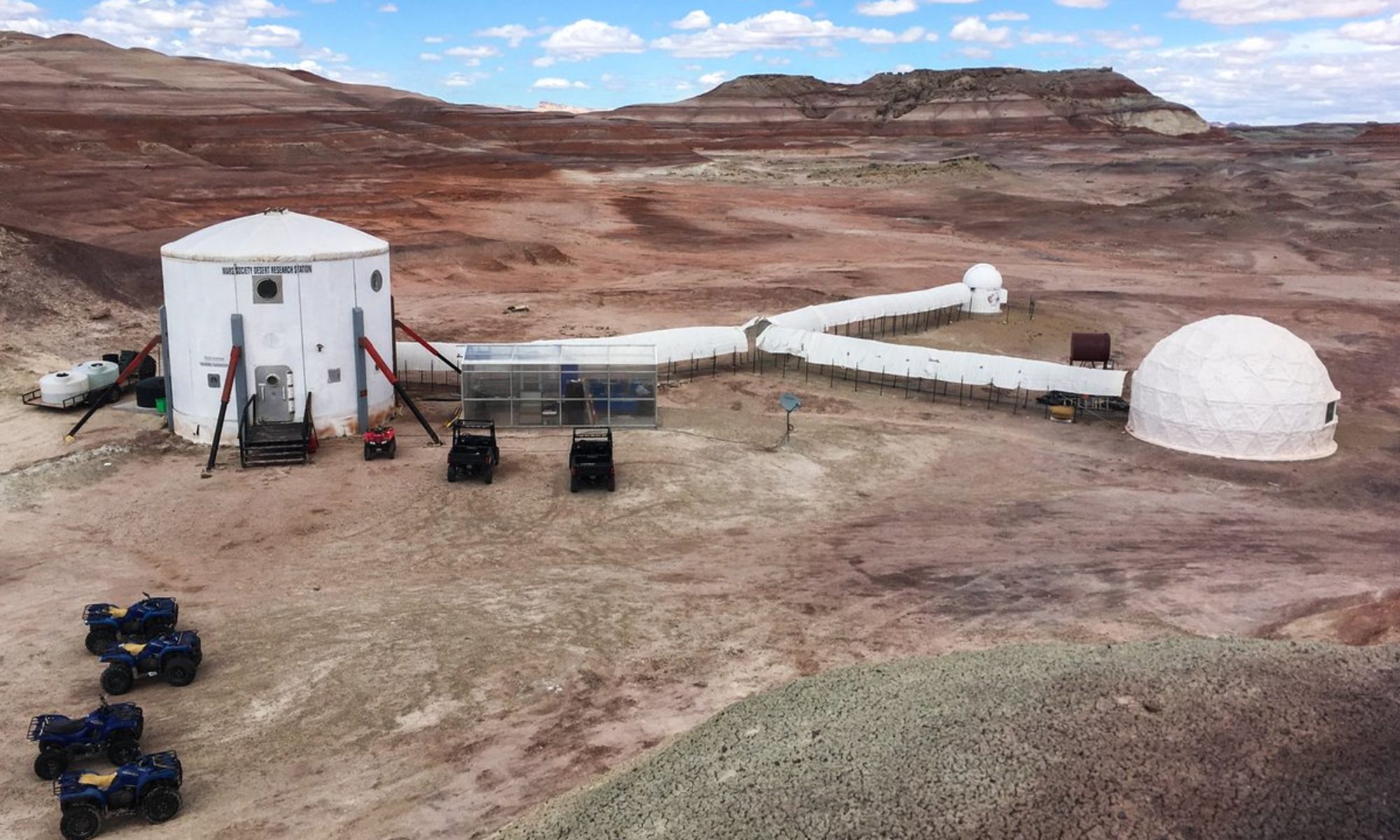
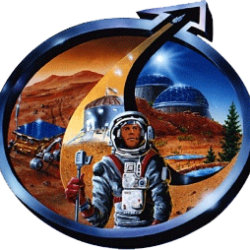
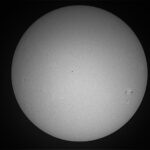

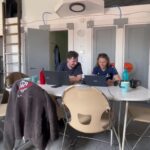
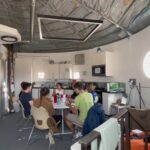
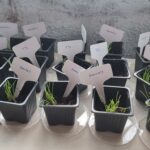
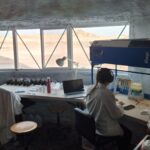
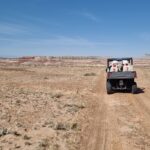
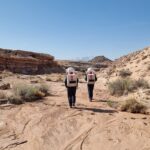
You must be logged in to post a comment.